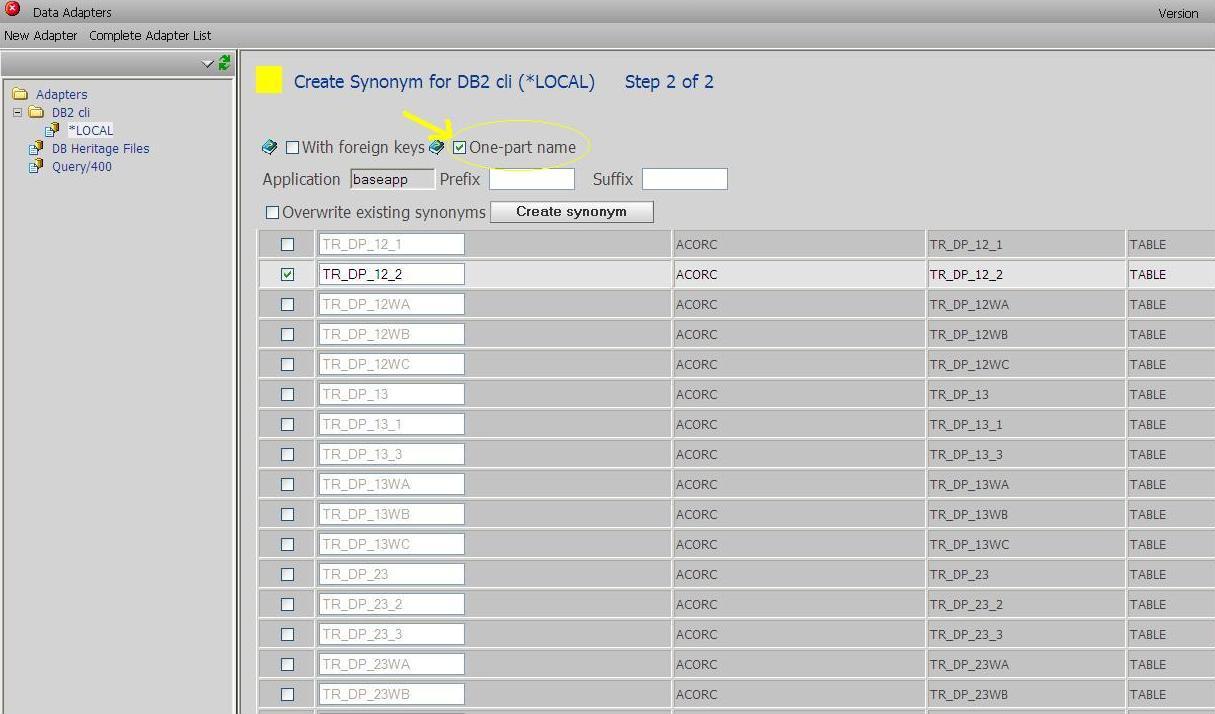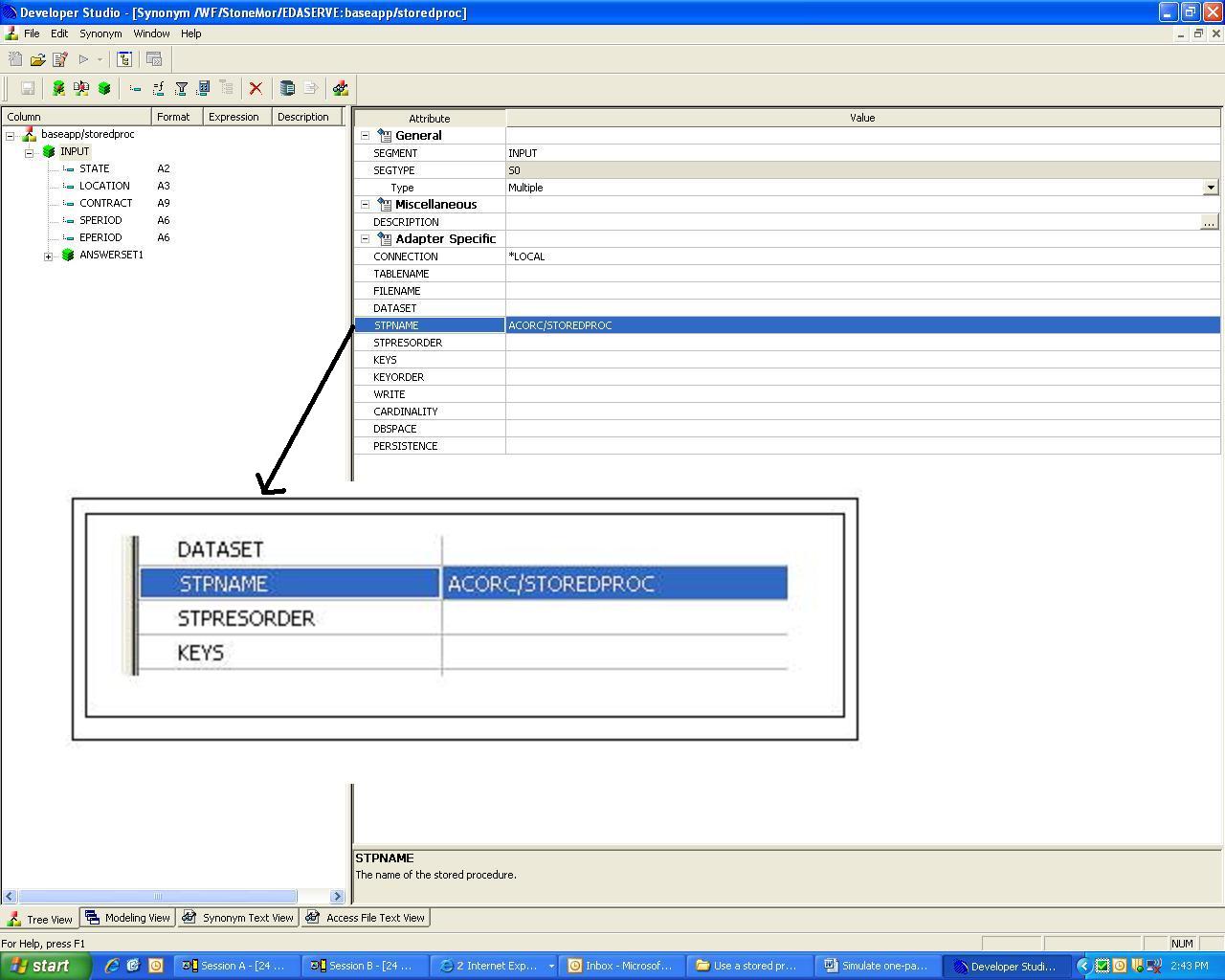Are you in a quandary because DB2 Web Query can't use *libl to find your stored procedure's synonym? Yes, it can!
In a previous Tech Tip, "Use a Stored Procedure as Your Data Source in DB2 Web Query for i," I discussed using a stored procedure as the data source in DB2 Web Query for i. Using a stored procedure as your data source offers many benefits to you as a developer:
- You can keep your business logic in one stored procedure that can return a result set to many DB2 Web Queries instead of duplicating the business logic in multiple Web queries.
- If your stored procedure is written in SQL (or embedded SQL in RPG), it can make use of user-defined functions or SQL views you have already created.
- If your shop has power users who were accustomed to creating their own Query/400 reports, you can develop stored procedures that include your business logic, create synonyms over them, and then let your power users build DB2 Web Queries over the stored procedure's synonyms. No more worries that different users are calculating and reporting numbers differently in different queries!
- If you have the need, your stored procedures can include an auditing function via an insert to an audit table to log the user/date/time of a DB2 Web Query report that selected sensitive data.
These are just a few benefits of creating a synonym over a stored procedure to feed data to DB2 Web Query. There is one minor drawback, however.
If you have created synonyms over table files, you most likely checked the "One-part name" box on the Create Synonym screen, as shown in Figure 1.
Figure 1: Note the "One-part name" option on the Create Synonym screen. (Click images to enlarge.)
DB2 Web Query uses one-part naming to search the library list to find the appropriate data set. If you are unsure what this means, Gene Cobb's article, "Making Better Use of DB2 Web Query with *LIBL," explains the process.
At the current time, synonyms built over stored procedures can only be defined with two-part naming. This results in a synonym with the stored procedure's library name hard-coded, as shown in Figure 2.
Figure 2: The synonym created over stored procedure STOREDPROC has library name ACORC hard-coded in the definition.
If like most shops, you avoid hard-coding library names, there is a workaround. For each stored procedure, create a "wrapper." The wrapper simply receives the input parameters and calls the original stored procedure, using the library list to locate it. The original stored procedure builds your result set and returns it.
To implement this technique, first create a library (in our example, SPLIB) that will contain nothing but the stored procedure wrappers.
Then, set up a naming convention to logically group the original stored procedures and their wrappers together.
Next, create and test your original stored procedure to confirm it is working properly (see the previous Tech Tip, "Use a Stored Procedure as Your Data Source in DB2 Web Query for i," for help creating and testing your original stored procedure).
Then, create the stored procedure wrapper. The wrapper for the stored procedure STOREDPROC was created using the SQL command shown here:
CREATE PROCEDURE SPLIB/STOREDPROW
(IN state CHAR ( 2),
IN location CHAR ( 3),
IN contract CHAR ( 9),
IN speriod CHAR( 6),
IN eperiod CHAR( 6))
LANGUAGE sql
SPECIFIC STOREDPROW
NOT DETERMINISTIC
READS SQL data
begin call
STOREDPROC(state, location, contract, speriod, eperiod);
end
Finally, create the synonym over the stored procedure wrapper. There is no need to create a synonym over the original stored procedure, just the wrapper.
You can then build DB2 Web Query(s) using the wrapper synonym as your data source.
Please note: for this technique to work, you must remember two things:
- Create the stored procedure for the wrapper with the *SYS naming convention.
- In your original stored procedure, make sure to declare the cursor as "with return to client." (See subroutine @open_cursor in the code examples shown in the previous Tech Tip "Use a Stored Procedure as Your Data Source in DB2 Web Query for i.") This will insure that the result set is passed all the way back from the original stored procedure to DB2 Web Query.























 More than ever, there is a demand for IT to deliver innovation. Your IBM i has been an essential part of your business operations for years. However, your organization may struggle to maintain the current system and implement new projects. The thousands of customers we've worked with and surveyed state that expectations regarding the digital footprint and vision of the company are not aligned with the current IT environment.
More than ever, there is a demand for IT to deliver innovation. Your IBM i has been an essential part of your business operations for years. However, your organization may struggle to maintain the current system and implement new projects. The thousands of customers we've worked with and surveyed state that expectations regarding the digital footprint and vision of the company are not aligned with the current IT environment. TRY the one package that solves all your document design and printing challenges on all your platforms. Produce bar code labels, electronic forms, ad hoc reports, and RFID tags – without programming! MarkMagic is the only document design and print solution that combines report writing, WYSIWYG label and forms design, and conditional printing in one integrated product. Make sure your data survives when catastrophe hits. Request your trial now! Request Now.
TRY the one package that solves all your document design and printing challenges on all your platforms. Produce bar code labels, electronic forms, ad hoc reports, and RFID tags – without programming! MarkMagic is the only document design and print solution that combines report writing, WYSIWYG label and forms design, and conditional printing in one integrated product. Make sure your data survives when catastrophe hits. Request your trial now! Request Now. Forms of ransomware has been around for over 30 years, and with more and more organizations suffering attacks each year, it continues to endure. What has made ransomware such a durable threat and what is the best way to combat it? In order to prevent ransomware, organizations must first understand how it works.
Forms of ransomware has been around for over 30 years, and with more and more organizations suffering attacks each year, it continues to endure. What has made ransomware such a durable threat and what is the best way to combat it? In order to prevent ransomware, organizations must first understand how it works. Disaster protection is vital to every business. Yet, it often consists of patched together procedures that are prone to error. From automatic backups to data encryption to media management, Robot automates the routine (yet often complex) tasks of iSeries backup and recovery, saving you time and money and making the process safer and more reliable. Automate your backups with the Robot Backup and Recovery Solution. Key features include:
Disaster protection is vital to every business. Yet, it often consists of patched together procedures that are prone to error. From automatic backups to data encryption to media management, Robot automates the routine (yet often complex) tasks of iSeries backup and recovery, saving you time and money and making the process safer and more reliable. Automate your backups with the Robot Backup and Recovery Solution. Key features include: Business users want new applications now. Market and regulatory pressures require faster application updates and delivery into production. Your IBM i developers may be approaching retirement, and you see no sure way to fill their positions with experienced developers. In addition, you may be caught between maintaining your existing applications and the uncertainty of moving to something new.
Business users want new applications now. Market and regulatory pressures require faster application updates and delivery into production. Your IBM i developers may be approaching retirement, and you see no sure way to fill their positions with experienced developers. In addition, you may be caught between maintaining your existing applications and the uncertainty of moving to something new. IT managers hoping to find new IBM i talent are discovering that the pool of experienced RPG programmers and operators or administrators with intimate knowledge of the operating system and the applications that run on it is small. This begs the question: How will you manage the platform that supports such a big part of your business? This guide offers strategies and software suggestions to help you plan IT staffing and resources and smooth the transition after your AS/400 talent retires. Read on to learn:
IT managers hoping to find new IBM i talent are discovering that the pool of experienced RPG programmers and operators or administrators with intimate knowledge of the operating system and the applications that run on it is small. This begs the question: How will you manage the platform that supports such a big part of your business? This guide offers strategies and software suggestions to help you plan IT staffing and resources and smooth the transition after your AS/400 talent retires. Read on to learn:
LATEST COMMENTS
MC Press Online